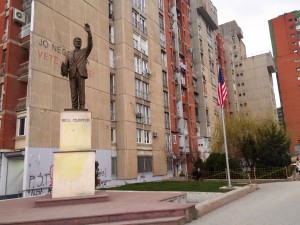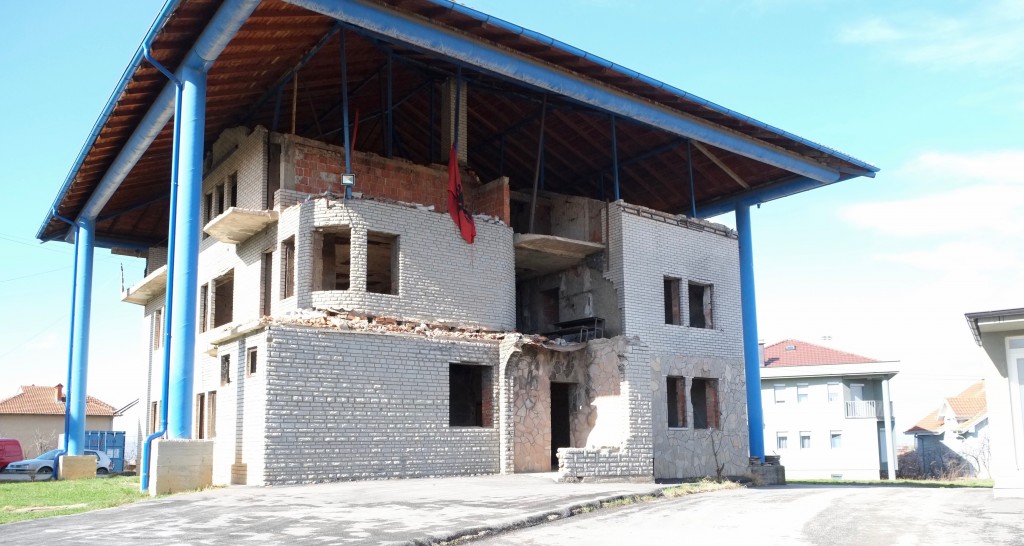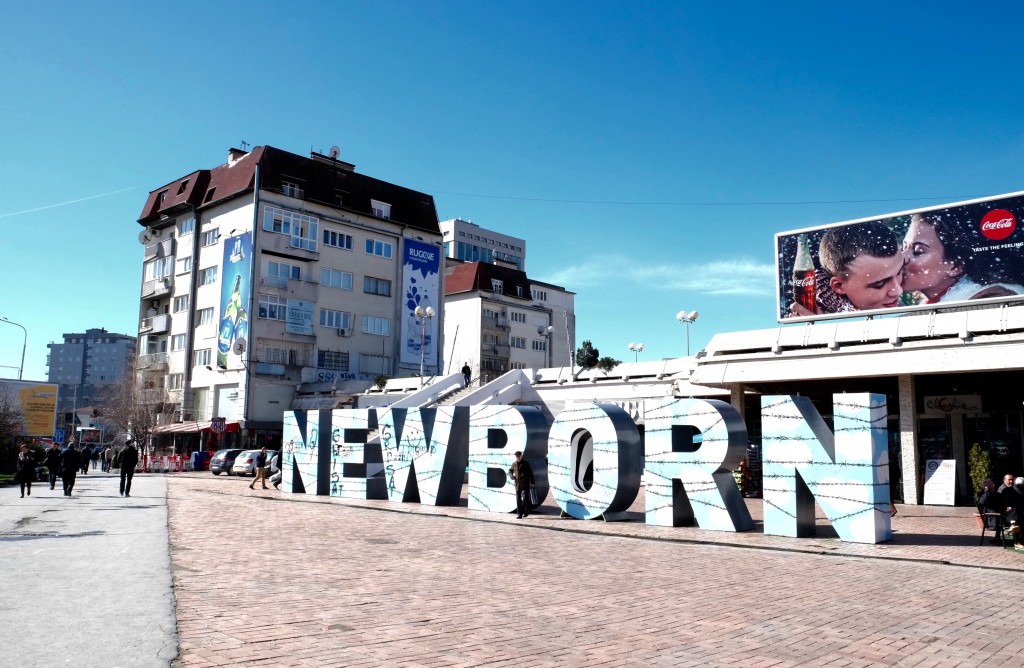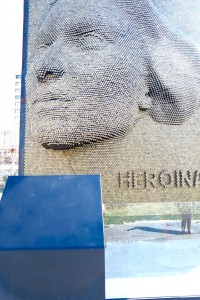This past week was our first study visit. What I love about SIT programs is that study trips are always included as part of the program and part of the learning process. These trips are invaluable as they really help contextualize the information we learn in class.
For our first study visit we traveled to Kosovo, one of the newest nations in Europe as it did not declare independence until 2008. However, not every nation recognizes Kosovo as some still consider it a part of Serbia.
The history of Kosovo is complicated and long but I will do my best to sum up the main points. Kosovo was an autonomous province during the time of Yugoslavia and was never given the same status as a republic. In 1989 Milosevic removed Kosovo’s autonomous status and began a project to unify Serbia and Kosovo. Albanian workers were replaced by Serbians and in some cases Serbians were even brought from Belgrade because they did not have enough people to fill all of the positions. During this time 80% of Albanians lost their jobs. Schools also became segregated at this time and Serbian and Albanian communities split.
Kosovars began to fight back. One way of doing this was through education. A parallel school system was created, which was part of the non-violent resistance taking place in Kosovo. Ibrahim Rugova was the leader of this non-violent movement but towards the end of the 90s when the situation was not improving in Kosovo people began to see the non-violent movement as a failure.
A guerilla group was created named the Kosovo Liberation army(KLA) and led by a man named Adem Jashari(more on him in another post). Tensions between Serbs and Albanians escalated and from 1998-199 there was armed conflict mostly between the KLA and Serbian forces. The international community was watching what was happening the decided to take action. Bill Clinton is the one that led the way and on March 24 199 NATO began a bombing campaign in Serbia. The fighting lasted until June 10, 1998 when the NATO bombings finally stopped and Milosevic, the president of Serbia at the time, signed an agreement.
I had been told by my most family that Kosovars love Americans. This is because they consider American to have liberated them from Serbia because of the NATO bombings. When we were driving into the city we noticed a large number of American flags all around the city. There is also a large statue of Bill Clinton downtown.

We arrived to Prishtina on Monday evening and had a delicious three hour meal together. It was a great start to the week.
On Tuesday morning we had a memory walk of Prishtina. It was lead by a professor from the University of Prishtina who has done research on memory studies. The first place we visited was a house school which was part of the parallel school system. This particular school was in use from 1991-1999 and was burned by the Serbian police in 1999. The woman giving the tour had actually attended this school.

The families who live nearby built a roof over the remaining structure to preserve it. Though the building remains it is not an official memorial site.
House schools were used by the Albanian population in Kosovo as an alternative to the education system imposed on them by Serbia. The Albanian language was banned in schools and history was taught solely from the Serbian perspective.
Thus the house schools were created first as a necessity because many students no longer had a school they could attend. As they continued the schools began to symbolize the national struggle. The idea was to fight back with education because it was a way they could survive as a nation.
Next we visited two monuments located in the center of Prishtina, yet very much in contrast to each other.
First we visited the Newborn Monument and then crossed the street to see the Heroinat Monument. Though they are in close proximity to each other, the Newborn Monument receives much more attention as it is easier to spot and more well-known.
The Newborn Monument was erected on Feb. 17, 2008 to commemorate the independence of Kosovo. From 2008-2012 it was left alone but since 2013 it has been repainted every year. Currently the monument is light blue with white clouds. A barbed wire fence pattern atop the blue and white design represents the isolation Kosovars face, especially youth. 90% of Kosovar youth have never traveled to Western Europe due to strict visa laws and economic setbacks.

No annual celebration takes place across the street to commemorate the Heroinat Memorial. The monument depicts an Albanian woman and consists of 20,000 pins. Each pin represents a woman raped during the war from 1998-1999. The monument has received criticism from feminist and civil society organizations. As our guide explained to us, “We wanted to commemorate women’s contributions…but we wanted it to be more diverse and not just Albanian women.”

It also limits women’s experience to just being victims of sexual violence when many women were active in other roles during the war, there were even women who fought for the KLA. Women were also active in the non-violent resistance that took place.
After just a few hours and visiting only a few sites, my classmates and I were beginning to see what a complicated issue this was. It is amazing what you can notice if you are informed about the history of a place. Throughout my week in Kosovo I noticed many things and learned a lot about the state-building process. I began to notice similarities between certain things I had seen in Tunisia and what was happening in Kosovo. But I will save the details on that for my next blog.

